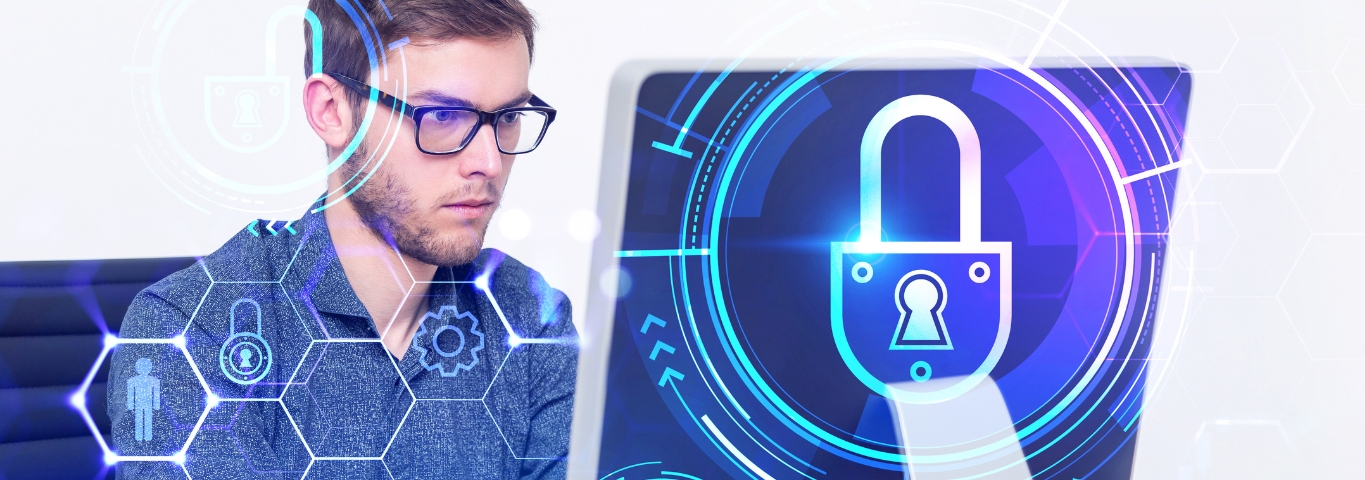In a technology where advancements are not simply improvements but lifelines to societal and financial growth, the significance of sturdy cybersecurity practices cannot be overstated.
As we navigate through a more digital international, the landscape of rules and engineering requirements conforms, imparting new demanding situations and possibilities for agencies and governments. Ensuring cybersecurity compliance with these emerging standards is not simply about adhering to criminal requirements; it's about safeguarding the integrity of our virtual infrastructures and, via extension, our way of existence.
The future of guidelines in cybersecurity and engineering demands a proactive approach, in which model and foresight are key to staying ahead of capacity threats.
This blog will discover how organizations can align their cybersecurity techniques with contemporary engineering requirements, making sure that they are not only compliant but also secure in ever-changing digital surroundings. From understanding the nuances of new guidelines to implementing superior security features, we can delve into the strategies that assist organizations in navigating the complexities of this dynamic area.
The Evolving Landscape of Cybersecurity Regulations
As we enter the twenty-first century, the regulatory panorama governing cybersecurity and engineering is changing rapidly. This evolution is fueled by the rapid pace of technological improvements, the increasing sophistication of cyber threats, and a heightened worldwide focus on facts, privacy, and security problems. Governments and international bodies are continuously crafting new guidelines to better defend industries, infrastructures, and individuals from the risks related to virtual ameliorations.
One of the most superb tendencies of this evolving panorama is the shift towards greater, complete, and stringent standards. For instance, the General Data Protection Regulation (GDPR) applied by the European Union set a new benchmark for records protection, influencing comparable guidelines globally.
Similarly, sectors, including healthcare, finance, and essential infrastructure, are seeing tighter controls and greater cybersecurity compliance requirements, reflecting their significance to countrywide and monetary protection.
Moreover, the upward thrust of technologies such as the Internet of Things (IoT), synthetic intelligence (AI), and 5G networks has precipitated regulatory our bodies to don't forget new frameworks that deal with the specific demanding situations posed via these improvements. Even as applicable, these technologies introduce complicated protection vulnerabilities requiring updated tactics and requirements to ensure they're leveraged effectively and responsibly.
For groups and businesses, staying abreast of those adjustments is crucial. The value of non-compliance may be intense, starting from hefty fines and reputational harm to greater intense operational disruptions.
However, past mere compliance, there may be a strategic advantage in embracing these evolving standards. Organizations that count on and adapt to those changes can beautify their security posture, construct agreements with customers and companions, and gain a competitive facet in increasing digital marketplaces.
Navigating this transferring regulatory terrain requires eager know-how of each cutting-edge and impending legal guidelines and standards. It also demands a strategic approach to cybersecurity practices that integrates compliance with broader commercial enterprise objectives and safety techniques.
As we keep witnessing the unfolding of those regulatory adjustments, the want for informed, agile, and complete cybersecurity measures has never been more essential.
Adapting Cybersecurity Practices
Adapting to the evolving landscape of cybersecurity policies and engineering requirements is a count of criminal necessity and a strategic imperative for corporations aiming to thrive in digitized surroundings. As regulatory frameworks become more problematic and worrying, corporations must ensure their cybersecurity practices are strong, flexible, and ahead looking.
Here are realistic steps that agencies can take to evolve their cybersecurity practices effectively:
Regular Training and Awareness Programs
One of the foundational steps in adapting cybersecurity practices is ensuring that all personnel are aware of contemporary threats and understand the best practices for mitigating these dangers. Regular education sessions, workshops, and simulations can help inculcate a subculture of protection focus on some point in the corporation.
Think of cybersecurity as fitness—prevention is better than treatment. Regularly updating your crew on the latest protection threats and how to avoid them is vital. Simple education sessions could make a massive difference in preventing security breaches.
-
Continuous Risk Assessment
Cybersecurity is not a one-time restore but a nonstop system of improvement. Regular risk exams permit companies to discover vulnerabilities in their current systems and anticipate capacity threats from rising technology. These exams should inform the improvement of a dynamic, responsive cybersecurity approach that evolves with changing regulatory requirements.
It's just like checking the climate before a massive ride: regularly reviewing your company's cybersecurity health. Identify any vulnerable spots on your machine that a hacker could probably destroy. By keeping this evaluation ongoing, you could catch troubles earlier before they turn into serious problems.
-
Investment in Advanced Security Technologies
As cyber threats become more sophisticated, the gear to fight them ought to also advance. Investing in ultra-modern protection technology, such as encryption, multi-element authentication, intrusion detection systems, and AI-driven threat detection, can provide stronger protection against cyberattacks.
This is like having a good lock on your door or a reliable alarm system for your property. Invest in the best cybersecurity equipment that protects against unauthorized access to your statistics and systems. This may encompass things like better antivirus software, firewalls, and steady backup solutions.
-
Developing a Compliance Roadmap
Understanding the precise regulatory requirements you observe in your enterprise and jurisdiction is essential. Organizations must expand a compliance roadmap outlining key milestones, obligations, and deadlines to ensure all regulatory necessities are met on time. This roadmap must be reviewed and updated in reaction to new regulations.
It's just as you may map out an avenue ride and outline a clear plan that suggests how your commercial enterprise will meet cybersecurity guidelines. This plan must encompass who does what, when key cut-off dates are, and how you'll update the plan as the rules change.
-
Engaging with Regulatory Bodies and Industry Groups
Active engagement with regulatory government and enterprise groups can offer insights into approaching modifications and best practices. Participation in these businesses can also provide a platform for voicing worries and influencing future regulations.
If you're uncertain about something, it is usually a good idea to ask for help. Engaging with cybersecurity specialists or legal advisors specializing in your industry can provide clarity and ensure you are on the right track.
-
Implementing an Incident Response Plan
Despite the tremendous preventive measures, breaches can arise. An effective incident response plan ensures that the organization can react swiftly and successfully to contain the breach, examine the damage, and notify all affected stakeholders, including regulatory bodies, in compliance with criminal necessities.
Accidents happen, and it's essential to prepare a useful resource package first. Similarly, have a plan in place for responding to a cybersecurity breach. Knowing who to name and what steps to take can limit harm and get your operations back on track faster.
-
Leveraging External Expertise
Sometimes, inner assets are not enough to fully recognize and implement vital cybersecurity measures. Partnering with cybersecurity professionals or consultants who specialize in your enterprise can provide the necessary steering and assist in bridging any gaps in your cybersecurity practices.
Just like you would rent a mechanic to repair a complex vehicle difficulty, don't hesitate to bring in cybersecurity experts if you need to shore up your defenses or tackle complex issues.
By integrating those techniques, agencies cannot only comply with present-day regulations but also adapt to future changes in the cybersecurity landscape. This proactive method no longer minimizes felony risks; it also enhances belief with customers and companions, securing a competitive edge within the virtual marketplace.
Future Trends in Cybersecurity
As we look ahead to cybersecurity's destiny, it's clear that the virtual panorama is constantly evolving, bringing new challenges and opportunities.
Smarter Security for Smarter Tech
As synthetic intelligence (AI) and device learning (ML) emerge as more common in our everyday gear and structures; they will also play a bigger role in how we defend our information. Imagine a relatively wise protection shield that learns and adapts to new threats even earlier than they can reason for damage.
However, just as those technologies are used for safety, cyber attackers can also use them to create more sophisticated threats. In this manner, our security strategies want to be smarter and extra adaptable.
-
Privacy Becomes Priority
With more of our private statistics online than ever before, private legal guidelines like Europe's GDPR are setting the fashion for stricter facts safety rules globally.
This means groups will want to be very cautious about how they deal with non-public facts, making sure that they are no longer simple and steady but also treated in keeping with criminal requirements that would vary from one United States of America to every other.
-
Keeping an Eye on the Supply Chain
Recent assaults have shown that vulnerable links in a supply chain can compromise the security of all agencies involved. Future trends will likely include stricter safety necessities not just for individual businesses but across their entire community of partners and suppliers.
The journey closer to robust cybersecurity and compliance is ongoing and calls for a proactive method. Organizations must constantly check their safety features, stay knowledgeable about new policies, and include innovative technology to enhance protection and compliance.
By doing so, they are now not handiest shielding themselves from capability threats and consequences; additionally, the construct is accepted as valid by stakeholders and maintains a competitive side in the virtual market.
Conclusion
Adapting to evolving engineering standards and cybersecurity practices isn't just about compliance—it's about dedication to excellence, proactive change control, and strategic foresight. As we look to the future, allow us to embrace these challenging situations as opportunities to strengthen our defenses, enhance our talents, and secure our location in an increasingly virtual world.






Comments